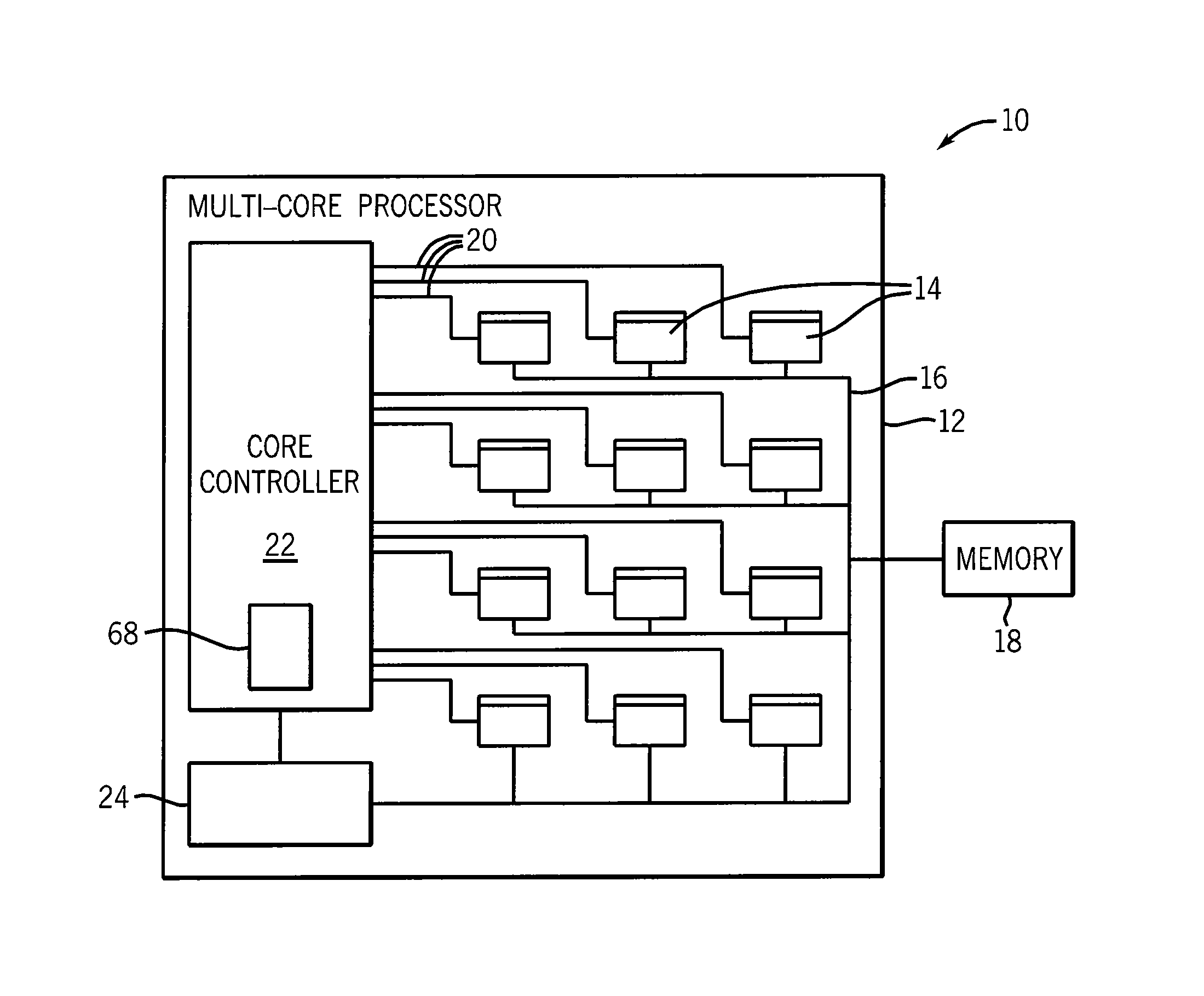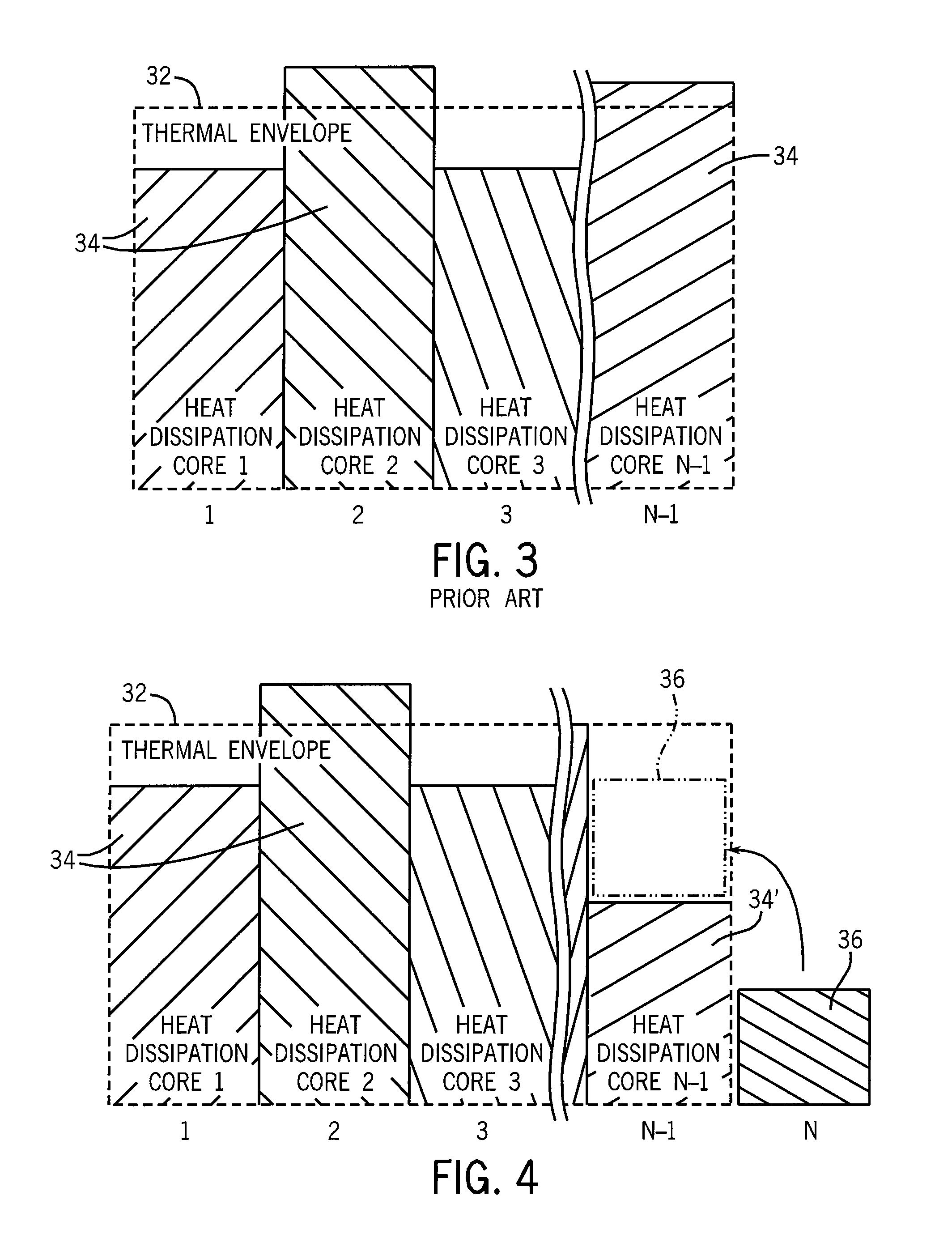Over-provisioned multicore processor
a multicore processor and over-provision technology, applied in the direction of liquid/fluent solid measurement, high-level techniques, instruments, etc., can solve the problems of global power dissipation, power consumed by the entire chip cannot be fully dissipated using cost-effective cooling methods, etc., to prevent both contention delays and software synchronization problems, improve the “energy-delay product” of typical workloads, and improve processing speed
- Summary
- Abstract
- Description
- Claims
- Application Information
AI Technical Summary
Benefits of technology
Problems solved by technology
Method used
Image
Examples
Embodiment Construction
[0035]Referring now to FIG. 1, an over-provisioned multicore processor 10 includes a thermal substrate 12, for example, a silicon wafer, supporting multiple cores 14. Each of the cores 14 communicates with each other and with a shared memory 18 (normally located off the substrate 12) by means of communication lines 16. A core controller 22 manages the on-chip core resources (including whether the cores 14 are in an active or quiescent state as will be described below) and allocation of various computation fragments 52 (e.g., software threads) onto these cores 14. This core controller 22 can be implemented as an integrated switching circuit or as a component of the firmware, or as a part of the software including the low level system software such as an operating system or a virtual machine monitor (VMM).
[0036]Referring now to FIG. 2, each core 14 may include a central processing unit (CPU) 26 and, for example, a first and second cache 28 and 30 such as an L1 and L2 cache of a type k...
PUM
 Login to View More
Login to View More Abstract
Description
Claims
Application Information
 Login to View More
Login to View More - R&D
- Intellectual Property
- Life Sciences
- Materials
- Tech Scout
- Unparalleled Data Quality
- Higher Quality Content
- 60% Fewer Hallucinations
Browse by: Latest US Patents, China's latest patents, Technical Efficacy Thesaurus, Application Domain, Technology Topic, Popular Technical Reports.
© 2025 PatSnap. All rights reserved.Legal|Privacy policy|Modern Slavery Act Transparency Statement|Sitemap|About US| Contact US: help@patsnap.com



